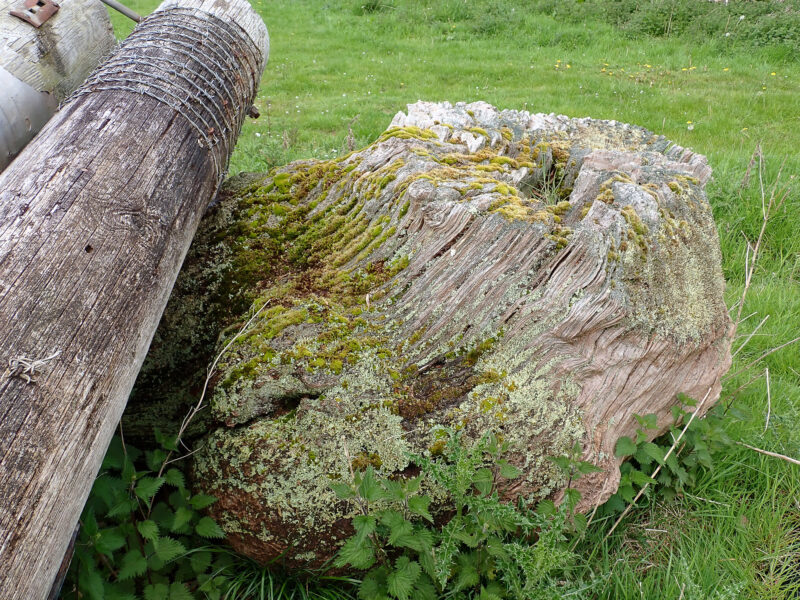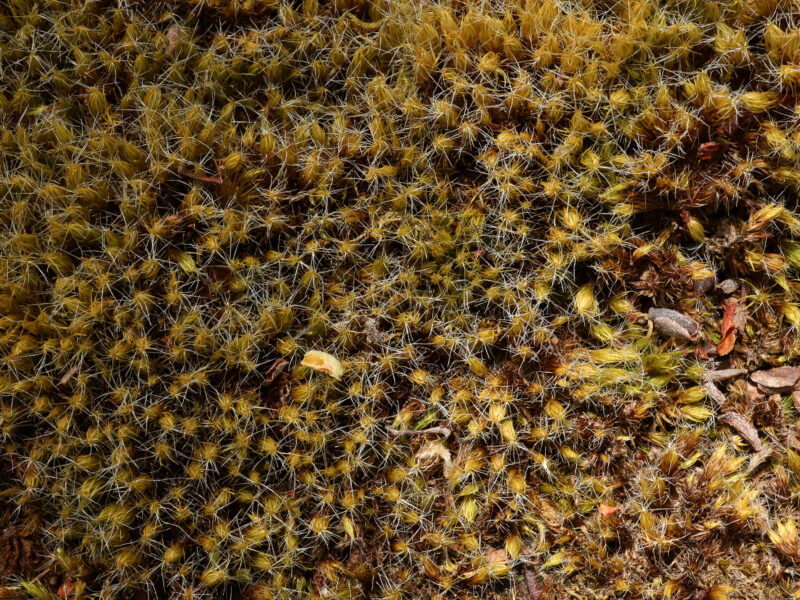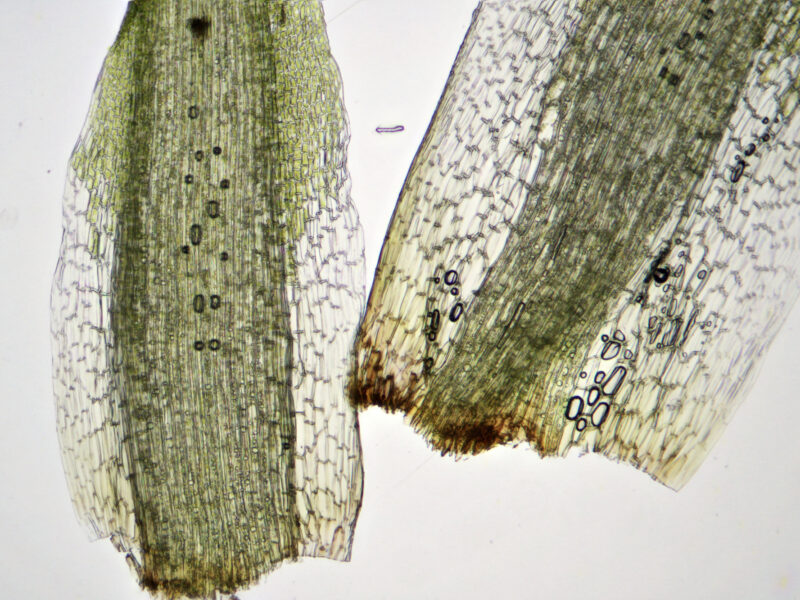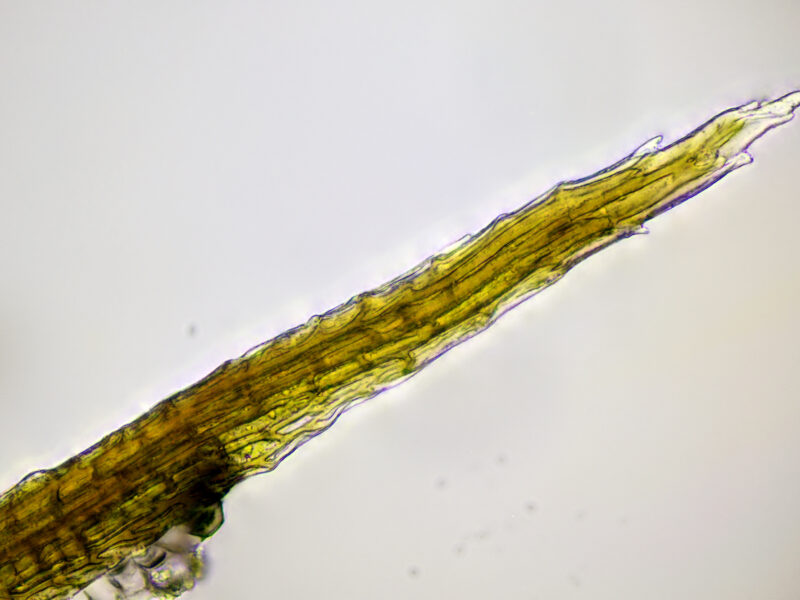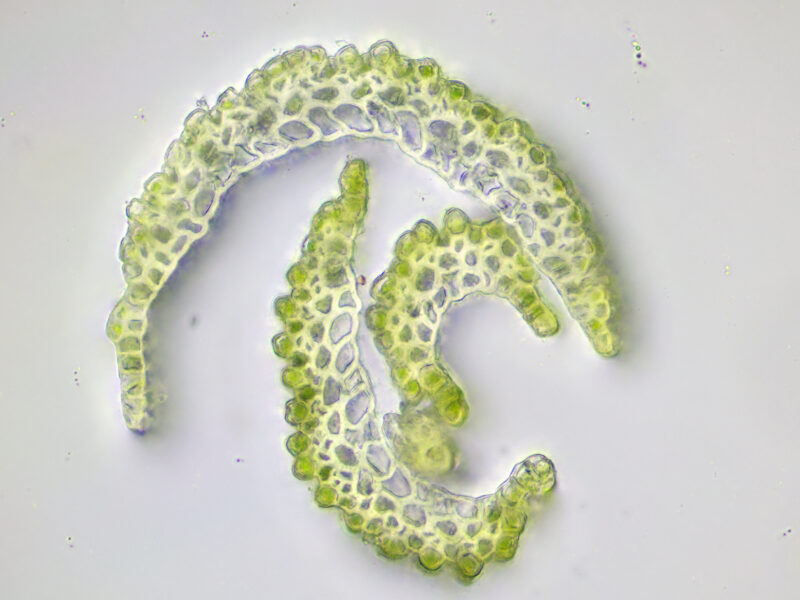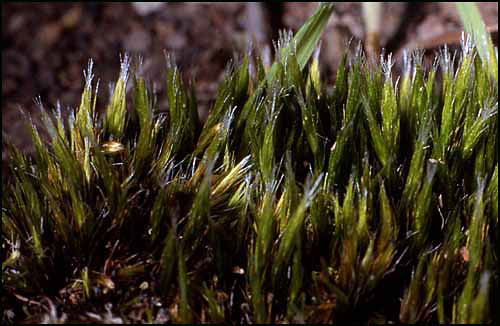Identification notes
Typical hoary-leaved plants are normally easy to recognise, especially when they are dry and the long hairpoints characteristically bend backwards, making the plants look starry. Apparently non-hoary forms of Campylopus introflexus can trip up the unwary, although careful examination of plants with a microscope will nearly always reveal (sometimes very) short hyaline hairpoints on some leaves.
As a genus, Campylopus can normally be recognised without difficulty by the very wide nerve of its species. This often fills much of the upper part of the leaf, making it look opaque. Possible confusers from Dicranum, Dicranella and Ditrichum have a narrower nerve that is, perversely, easier to see under a hand lens.
C. introflexus is not fussy about habitat, except that it always grows in places with a low pH, such as on heathland. It colonises man-made habitats more than any other Campylopus and, in calcareous districts, may be restricted to well-weathered or decaying wooden fence posts, often in the company of other calcifuges like Ceratodon purpureus and Dicranoweisia cirrata.
Read the Field Guide account
